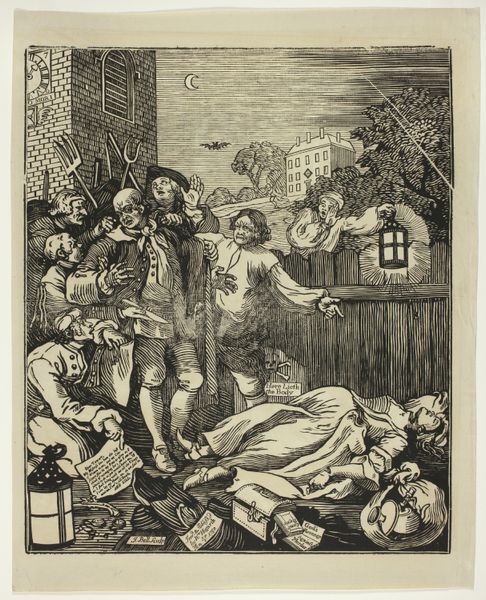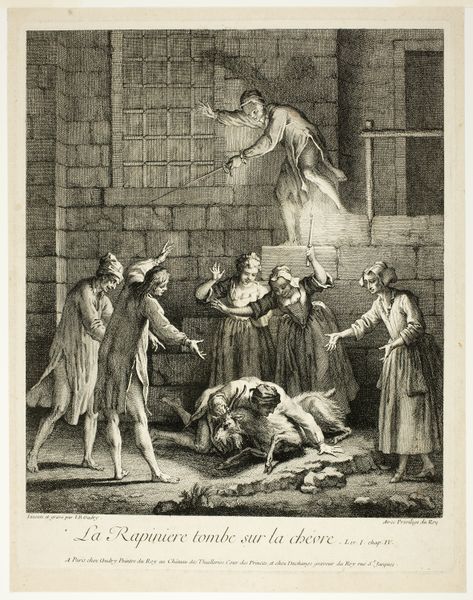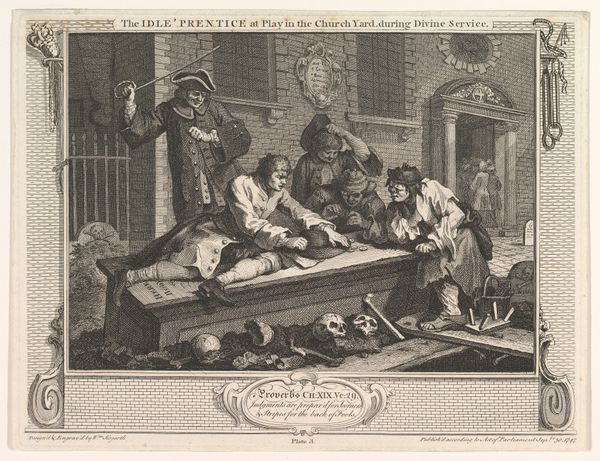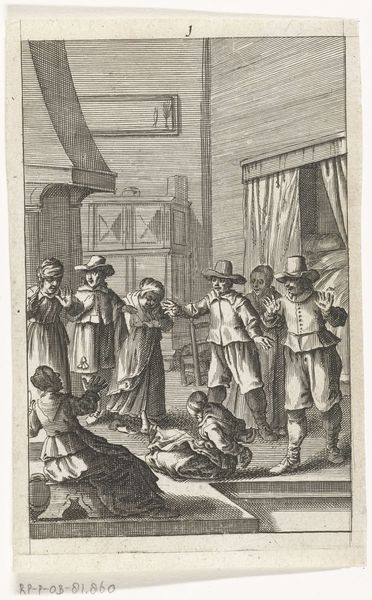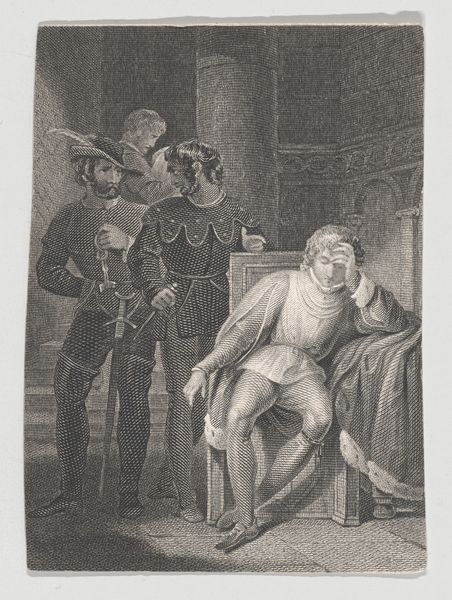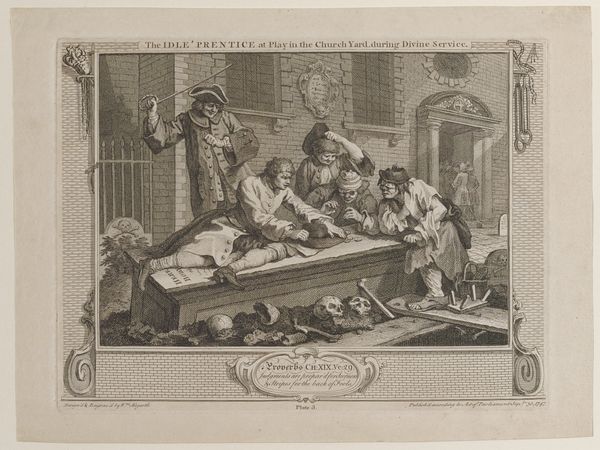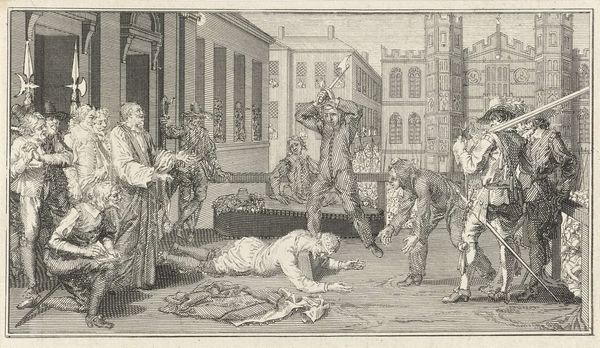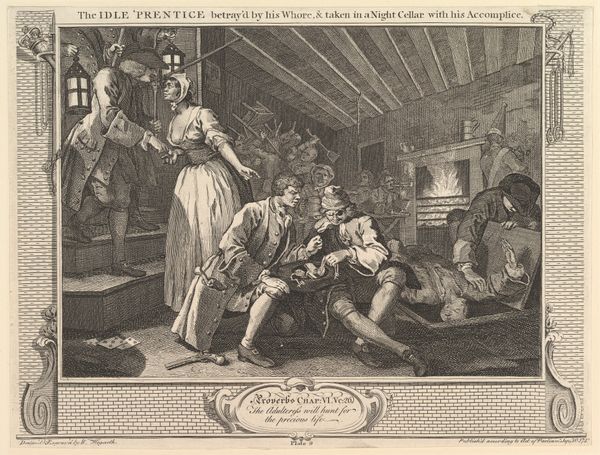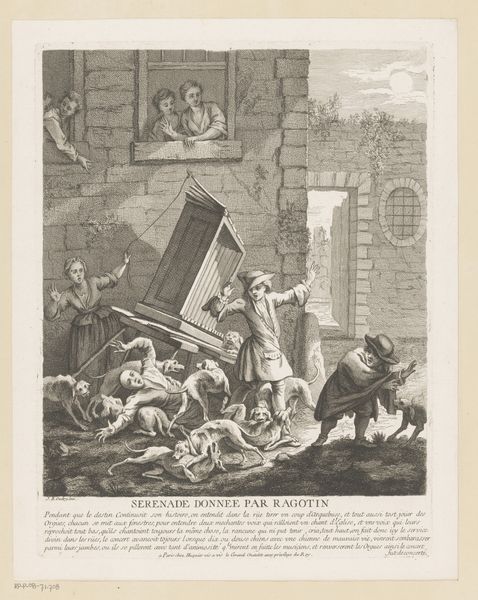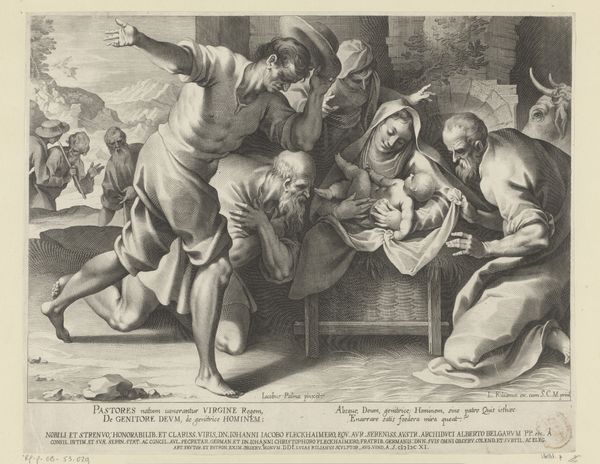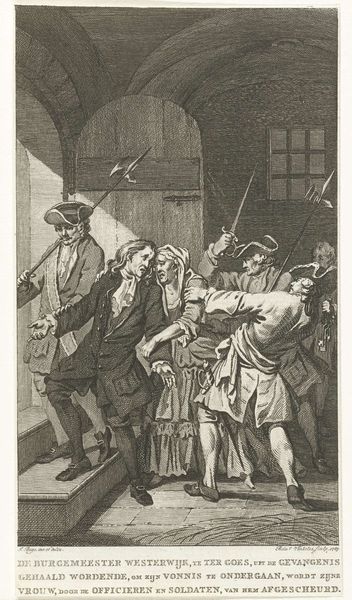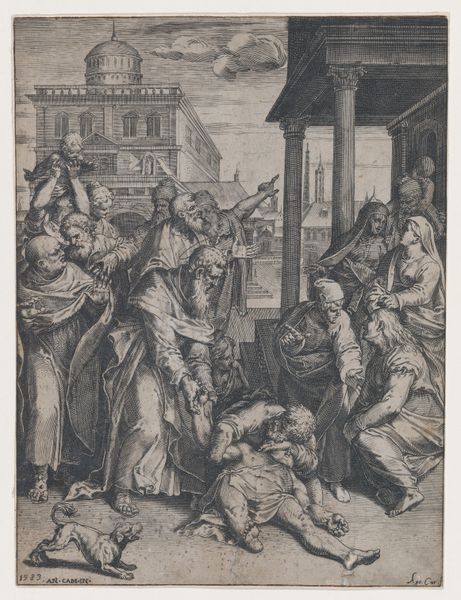
Cruelty in Perfection (The Four Stages of Cruelty) 1751
0:00
0:00
drawing, print, engraving
#
drawing
#
narrative-art
#
neoclassicism
# print
#
death
#
bird
#
personal sketchbook
#
sketchwork
#
men
#
genre-painting
#
history-painting
#
engraving
Dimensions: sheet: 12 7/16 x 12 1/2 in. (31.6 x 31.8 cm)
Copyright: Public Domain
Curator: Here we have William Hogarth's "Cruelty in Perfection," created in 1751. It’s one of four prints from his series, "The Four Stages of Cruelty," each illustrating a descent into barbarity. Editor: Brrr! It's dark and unsettling. You know, those stark blacks and whites do an incredible job evoking a mood of grim inevitability. Curator: Hogarth meant it to be, to a point. He was invested in the didactic use of art and in the possibilities afforded by prints and drawings. He wanted the series to be available inexpensively so they could circulate as moral and social commentary. This image shows the culmination of Tom Nero's evil actions: he's been caught and is being punished. Editor: It’s rather gruesome, isn't it? The way she’s splayed out and utterly vulnerable? Yet the way they surround him feels... orchestrated. A grim, pre-set doom played out in public view, with no possibility for change. The composition is so strong and really drives that point home! It is kind of wild that someone, even way back then, thought about it this deliberately. Curator: And what interests me most is thinking about Hogarth’s aim. This was London society in the 18th century, a world where public executions and other quite vicious punishments were very ordinary realities. But what message did he believe he was imparting to that very world? How effective was the message within the social contexts of crime, punishment, and class? Editor: True. I get that. Perhaps it offered a mirror, allowing viewers to witness a dramatized but real side of their society—almost a funhouse version, you know? That invites introspection... and maybe even empathy for victims? Or... I'm I pushing that a little far, as it makes me so uncomfortable it almost needs an emotional counterpoint? Curator: The impact remains fascinating to contemplate, as it speaks volumes about social order, justice, and how art can function as a tool for public debate. I wonder... were such graphic representations successful in initiating meaningful conversations, or simply a reaffirmation of the accepted social norms of that period? Editor: It's potent either way, leaving you stuck, thinking long after viewing! What about you? Final thoughts? Curator: Indeed. Thinking through these visual essays underscores the enduring strength of Hogarth’s vision, as well as the continuous debates concerning visual culture and social responsibility.
Comments
No comments
Be the first to comment and join the conversation on the ultimate creative platform.
